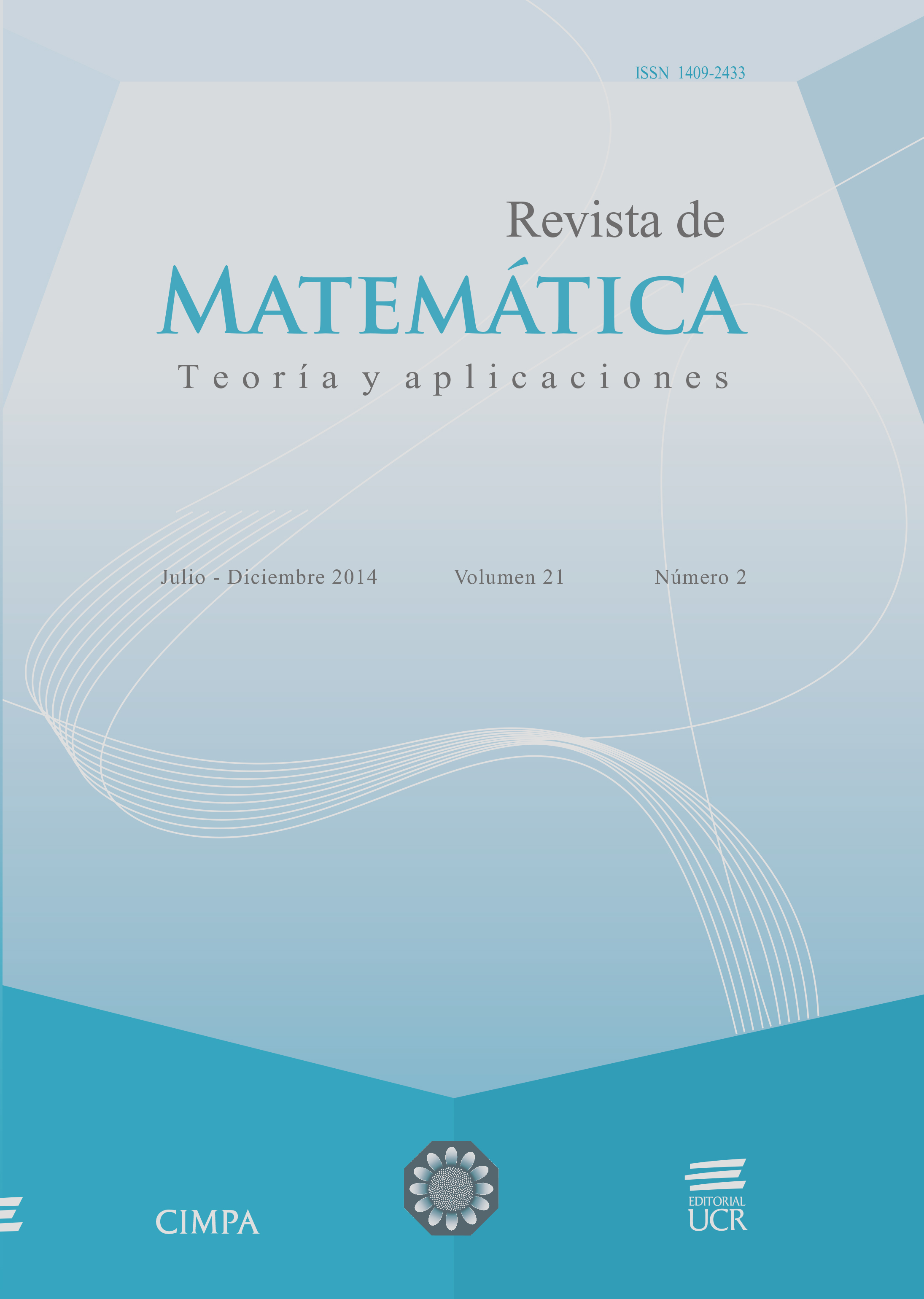Resumen
Algunos casos de intoxicación por consumo de peces contaminados, como la intoxicación por ciguatera, ocurren inesperadamente y no son fáciles de detectar previamente, dado que los peces que portan la toxina no presentan aspecto y/o síntomas de enfermos. En este trabajo proponemos un modelo matemático para el transporte y acumulación de una toxina a través de una cadena alimentaria. El modelo se plantea mediante un sistema rígido de ecuaciones diferenciales que describen la dinámica. Se analiza la estabilidad local de la solución de equilibrio. Se discuten diferentes escenarios de aparición de brotes de una toxina a partir de simulaciones numéricas obtenidas mediante un esquema de discretización que combina un método de Runge-Kutta de tercer orden y la regla del trapecio, evitando la rigidez del sistema. Los resultados muestran que el tiempo que tarda en desaparecer la toxina en la red trófica depende del estado en que se encuentra la dinámica poblacional al momento del brote. Esta información puede emplearse para establecer un tiempo de veda en la pesca de tal manera que la toxina se reduzca a niveles inocuos para la salud humana.
Citas
Arencibia, G.; Mancera, J.E.; Delgado, G. (2010) La ciguatera, un riesgo potencial para la salud humana: preguntas frecuentes, Universidad Nacional de Colombia, San Andrés Isla, Colombia.
Barton, E.D.; Tanner, P.; Turchen, S.G.; Manoguerra. A. (1995) “Ciguatera fish poisoning. A Southern California epidemic", Western Journal of Medicine 163(1): 31–35,
Chattopadhyay, J.; Arino, O. (1999) “A predator-prey model with disease in the prey", Nonlinear Analysis: Theory, Methods & Applications 36: 747–766.
Chattopadhyay, J.; Sarkar, R.R. (2003) “Chaos to order: preliminary experiments with a population dynamics models of three trophic levels", Ecological Modelling 163(1-2): 45–50.
Chattopadhyay, J.; Sarkar, R.R.; Pal, S. (2004) “Mathematical modeling of harmful algal blooms supported by experimental findings", Ecological Complexity 1(3): 225–235.
De Sylva, D.P. (1994) “ Distribution and ecology of ciguatera fish poisoning in Florida, with emphasis on the Florida Keys", Bulletin of Marine Science 54(3): 944–954.
de Fouw, J.C.; van Egmond, H.P.; Speijers, G.J.A. (2001) “Ciguatera fish poisoning: a review", RIVM report 388802021, Rijksinstituut voor Volks-gezondheid en Milieu (National Institute of Public Health and Enviroment, The Netherlands), Bilthoven
Egmond, H.P. van; Apeldoorn, M.E. van; Speijers, G.J.A. (2005) Biotoxinas Marinas. Estudio FAO: Alimentación y Nutrición, Organización de las Naciones Unidas para la Agricultura y la Alimentación (FAO), Roma.
Holling, C.S. (1965) “The functional response of predator to prey density and its role in mimicry and population regulation", Mem. Entoml. Soc. Can 97(S45): 5-60.
Lech, J.J.; Vodicnik, M.J.; Elcombe, C.R. (1982) “Induction of monooxygenase activity in fish"; Aquatic Toxicology 1(107): 415–418.
Kooi, B.W.; Bontje, D.; Voorn, G.A.K. van; Kooijman, S.A.L.M. (2008) “Sublethal toxic efects in a simple aquatic food chain", Ecological Modelling 212(3-4): 304–318.
Kubanek, J.; Hicks, M.K.; Naar, J.; Villareal, T.A. (2005) “Does the red tide dinoflagellate Karenia brevis use allelopathy to outcompete other phytoplankton?", Limnology and Oceanography 50(3): 883–895.
Lehane, L.; Lewis, R.J. (2000) “Ciguatera: recent advances but the risk remains", International Journal of Food Microbiology 61(2-3): 91–125.
Lewis, R.J.; Holmes, M.J. (1993) “Origin and transfer of toxins involved in ciguatera", Comp. Biochem. Physiol. C: Pharmacology, Toxicology and Endocrinology 106(3): 615–628.
Lewis, R.J. (2001) “The changing face of ciguatera", Toxicon 39(1): 97- 106.
Masayuki, I.; Keisuke, M.; Hisatoshi, U.; Megumi M.; Masahiro, H. (2004) “First- and second-generation total synthesis of ciguatoxin CTX3C", Proceedings of the National Academy of Sciences of the United States of America 101(33): 12013–12018.
Parson, M.L.; Settlemier, C.J.; Bienfang, P.K. (2010) “A simple model capable of simulating the population dynamics of Gambierdiscus, the benthic dinoagellate responsible for ciguatera fish poisoning", Harmful Algae 10(1): 71–80.
Pielou, E.C. (1969) An Introduction to Mathematical Ecology. Wiley-Interscience, New York.
Ruff, T.A.; Lewis, R.J. (1994) “Clinical aspects of ciguatera: an overview", Memoirs of the Queensland Museum - Nature 34(3): 609–619.
Sakamoto, B.; Nagai, H.; Hokama, Y. (1996). “Stimulators of Gambierdiscus toxicus (Dinophycease) growth: the possible role of gambieric acid-A as an endogenous growth enhancer", Phycologia 35(4): 350–353.
Sarkar, R.R.; Pal, S.; Chattopadhyay, J. (2005) “Role of two toxin- producing plankton and their efect on phytoplankton system – A mathematical study supported by experimental findings", BioSystems 80(1): 11–23.
##plugins.facebook.comentarios##

Esta obra está bajo una licencia internacional Creative Commons Atribución-NoComercial-CompartirIgual 4.0.
Derechos de autor 2014 Daniel Arbeláez A., Jorge Mauricio Ruiz V.





